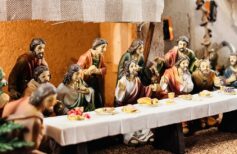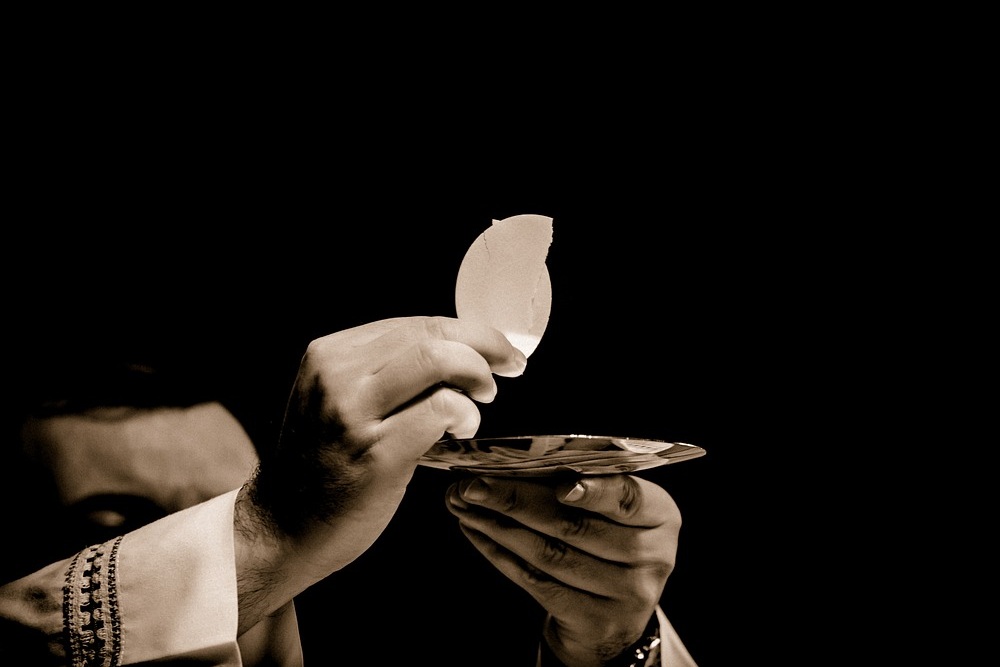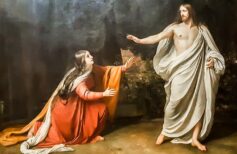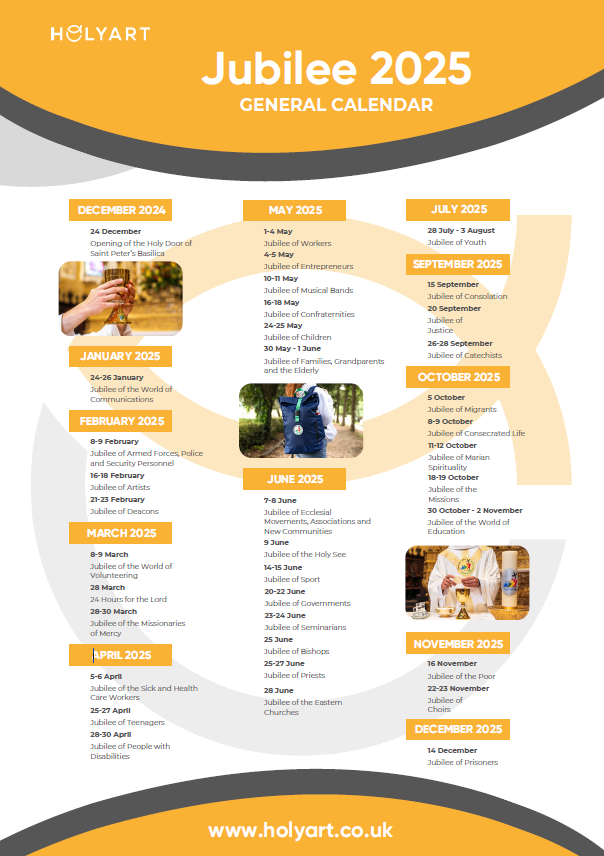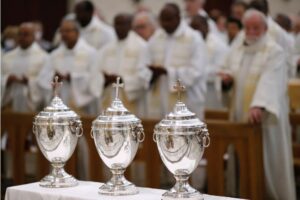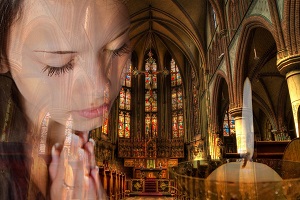The miracles of Jesus mentioned in the Canonical Gospels are considered historical events, although told from a theological perspective. Here are the main ones.
Contents [hide]
The Catholic Church acknowledges the existence of miracles, that is, events not attributable to natural causes but rather to divine intervention. These are occurrences that overturn the natural order of things, transcend reality, and offer a glimpse of the divine on Earth. For this reason, it has always been a priority for the Church to identify potential miracles, carefully examine them, and determine which ones are genuine and which are not. When it comes to the miracles of Jesus, particular caution has always been necessary. It is essential to distinguish between the miracles of Jesus mentioned in the Canonical Gospels, considered to be true historical facts and those narrated in the Apocryphal Gospels, which are told more like fairy tales, designed to astonish and capture the attention of readers.
Even the miracles of Jesus reported in the Canonical Gospels are regarded as historical facts, but they are imbued with a transcendent meaning and are often narrated from a theological, if not allegorical, point of view, according to some Bible scholars.

The apocryphal gospels: what differentiates them from the canonical ones
The apocryphal gospels are not part of the New Testament…
We must consider these extraordinary events as signs that Jesus performed not to amaze those who followed Him or to convince the unbelievers to believe in Him. Rather, they are defences of His mission, miracles performed to help faith, to inspire greater belief.
The miracles of Christ mentioned in the four Gospels can be classified into:
– Healings from permanent disabilities,
– Healings from injuries and diseases,
– Exorcisms and liberation from evil spirits,
– Resurrection of the dead.
There are other miracles that do not fall into these categories, and according to the Evangelist John, many other miracles were not recorded.
Another classification can be made based on how many and which Gospels mention the various miracles. Some are shared in all four Gospels, while others are mentioned in only some.
Also considered miracles of Jesus are the Annunciation, His conception by the Holy Spirit, and His birth from the Virgin Mary, even though He was not directly responsible for these events, and they are only briefly mentioned in the Gospels.
The miracles of Jesus mentioned in all four Canonical Gospels are: His Baptism, the Multiplication of the loaves, and the Predictions of the Last Supper.
In the Baptism of Jesus, the miraculous element is the descent of the Holy Spirit in the form of a dove: while John the Baptist baptises Jesus in the waters of the Jordan, the sky opens, and a dove descends, accompanied by a Voice recognising Jesus as the beloved Son. In the Gospel according to John, there is no mention of the Baptism, only of the descent of the dove.
The four Gospels also recount the Last Supper and the institution of the Eucharist, that is, the miraculous transformation of the bread into the Body and the wine into the Blood of Christ, and His predictions about Judas’s betrayal and His own end.
Additionally, all four Evangelists speak of the Appearances of Jesus after the Resurrection and before the Ascension. Each of them gives a different account, especially regarding the people involved, the duration, and the locations where these appearances took place.

The multiplication of loaves and fishes
In fact, the Gospels mention two multiplication events of loaves and fishes.
The first multiplication is recorded by all four Evangelists: Jesus was preaching in a desert place where those listening were unable to buy food. He asked His disciples to gather whatever they could, and they returned with only 5 loaves and 2 fish, with which Jesus fed five thousand people.
On another occasion, Jesus fed four thousand men who had not eaten for three days to stay and listen to Him, using seven loaves which He broke and gave to His disciples to distribute, along with a few small fish which He blessed. There was so much leftover food that seven baskets were collected. Only Matthew (Matthew 15:32-39) and Mark (Mark 8:1-10) mention this second episode.
In both cases, the symbolic message is clear: it is a kind of foreshadowing of the Eucharist, a miraculous food that can nourish and give life to anyone who believes in Christ and lives in Him.

The Last Supper by Leonardo da Vinci
The Last Supper by Leonardo da Vinci, in Santa Maria delle Grazie, is one of the most famous works in the world…
The resurrections: Lazarus and the daughter of Jairus
Before the Resurrection of Lazarus, the three Synoptic Gospels (Mark, Matthew, Luke) mention the resurrection of the daughter of Jairus, a synagogue leader. The man prayed to Jesus to save his sick daughter, but when they arrived at the house where she lay, she had already died. Christ then told the relatives to wake her up, as she was only sleeping, and He resurrected her.
We also include here the healing of the woman with a haemorrhage, which occurred at the same time as the resurrection of the daughter of Jairus. In fact, reading Mark’s Gospel, we get the impression that, in order to heal the woman who had been suffering from terrible haemorrhages, Jesus delayed and did not manage to reach Jairus’s house before his daughter died. In reality, both episodes show the healing power of Faith: the faith of Jairus in the first case, who does not give up and continues to pray to Jesus, even after his relatives urge him to stop because it is too late; and the faith of the woman in the second, who secretly touches Jesus, knowing that this alone could be enough to save her.
Of course, the Resurrection of Jesus Himself is a miracle, though it cannot be compared to the resurrections in the Gospels: Jesus returns to life to ascend to Heaven and eternity, while Lazarus and the daughter of Jairus return to their earthly lives and are still destined to grow old and die one day.

Healings and exorcisms
Among the miracles of Jesus described in the Gospels, many are healing miracles from diseases or severe disabilities. The way in which Jesus heals the sick varies each time: sometimes He merely speaks with them, other times He needs to touch them, and so on. For example, to the blind man encountered in Bethsaida, He put saliva on his eyes, while John speaks of a man who had been blind from birth, healed by the mud that Jesus had spat on. Mark’s Gospel tells of a deaf-mute man whom Jesus healed by touching his ears and then his tongue with His own saliva.
Jesus healed many lepers, to the point that He had to flee from their increasingly pressing requests.
In the Gospels of Matthew (Matthew 8:28-34) and Luke (Luke 8:26-39), the exorcism performed by Jesus on the demoniac of Gerasa is recounted. This man, who lived in the region of the Gerasenes, was possessed by a legion of demons. Jesus was able to free him by sending the demons into a herd of pigs, which He then made a rush into the sea.







